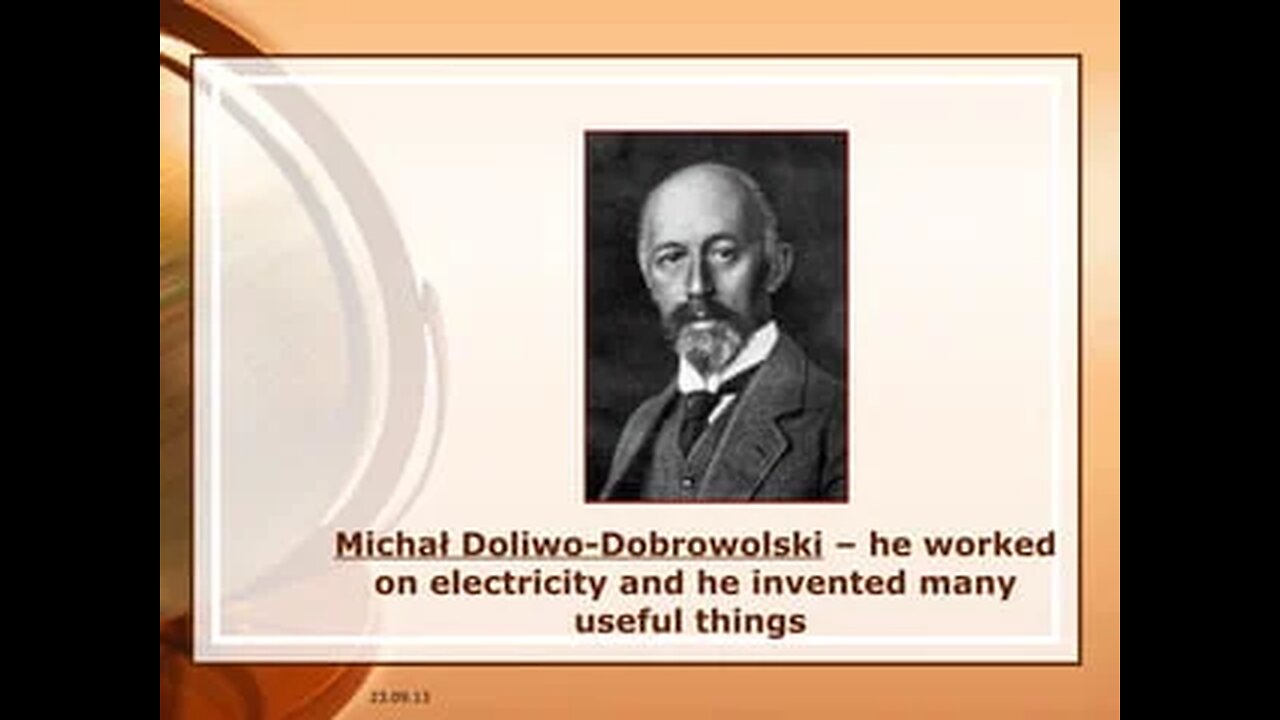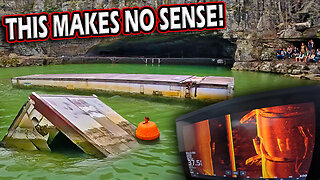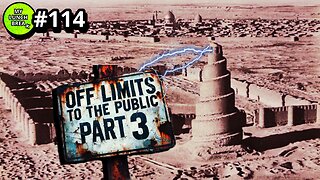Premium Only Content

Polish Genius : Prof. Michal Doliwo Dobrowolski - 3 phase power
https://www.slideshare.net/slideshow/the-industry-developed-26474040/26474040 / An important inspiration for Doliwo-Dobrowolski was an article on, among others, alternator from March 1888 by Galileo Ferraris - an Italian physicist and collaborator of N. Tesla. In just a few months, a scientist working for the German concern constructed a three-phase alternating current generator, and in March 1889 he submitted a patent for a 100 W asynchronous motor with a squirrel-cage rotor, operating in a three-phase alternating current system. Doliwo also introduced the later commonly used term "three-phase" - to describe a system of three alternating current electrical circuits. This arrangement opened up many possibilities for building engines, transformers and generators on new principles.
The inventor continued to work intensively. In the same year, he constructed a three-phase alternating current generator. He built higher power engines, ring engines, and experimented with the possibility of adding a starting resistor. In 1890, Doliwo-Dobrowolski had a three-phase transformer ready. Thanks to his inventions, in the late 1880s, AEG began selling three-phase motors with a power of 2 and 3 HP. The inventor developed everything necessary to build a three-phase power grid. At the same time, German electrical engineer Oskar Miller came up with the idea of creating a special three-phase installation that would supply energy over a long distance and provide electricity at the International Electrotechnical Exhibition scheduled for 1891 in Frankfurt am Main. This spectacular project required significant investments and scale, but it turned out to be the most important event of the year and determined the abandonment of direct current in industry and energy.
Guests arriving in Frankfurt on August 24, 1891 for the Electrotechnical Exhibition were greeted by the sight of a magnificent illuminated 10-meter waterfall. The installation's water pump was powered by a three-phase induction electric motor with a power of 100 HP, the largest in the world at that time. The electricity necessary to run the engine and illuminate 1,000 light bulbs was supplied via ground wires from a hydroelectric power plant on the Neckar River in Lauffen, 175 km from Frankfurt. 3,282 poles were used to build the transmission line. The three-phase power line operated at a voltage of 15 kV with an efficiency of 75%. Michał Doliwo-Dobrowolski was the key designer of the whole.
-
 1:03:41
1:03:41
Man in America
12 hours agoAre Trump & Musk the COUNTER-ELITES? w/ Derrick Broze
32.5K21 -
 LIVE
LIVE
DLDAfterDark
3 hours ago $3.07 earnedDLD Live! SHTF Handguns! Which Would You Choose?
702 watching -
 1:50:38
1:50:38
Mally_Mouse
6 hours agoSaturday Shenanigans!! - Let's Play: Mario Party Jamboree
31.3K -
 1:13:00
1:13:00
Patriots With Grit
10 hours agoWill Americans Rise Up? | Jeff Calhoun
24.9K10 -
 14:55
14:55
Exploring With Nug
10 hours ago $8.88 earnedWe Found Semi Truck Containers While Searching for Missing Man!
44K7 -
 27:57
27:57
MYLUNCHBREAK CHANNEL PAGE
18 hours agoOff Limits to the Public - Pt 3
86.6K57 -
 38:07
38:07
Michael Franzese
10 hours agoLeaving Organized Crime and Uncovering Mob in Politics: Tudor Dixon and Michael Franzese
78.6K15 -
 2:42:54
2:42:54
Jewels Jones Live ®
2 days agoAMERICA IS BACK | A Political Rendezvous - Ep. 111
64.3K46 -
 8:47:33
8:47:33
Due Dissidence
1 day agoLIVE: Workers Strike Back Conference ft. Chris Hedges, Jill Stein, Kshama Sawant, and More!
106K57 -
 8:36:37
8:36:37
Right Side Broadcasting Network
5 days agoLIVE REPLAY: CPAC 2025 Day Three with President Donald J. Trump - 2/22/25
442K99